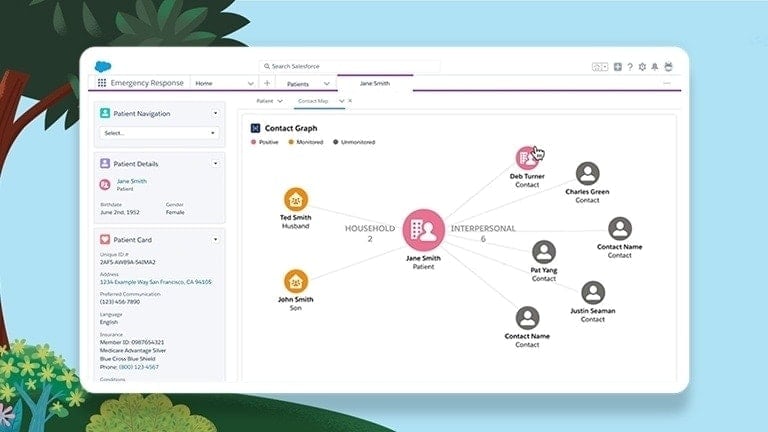SVP of Strategy, Salesforce Marketing Cloud
VP of Data & Identity, Salesforce Marketing Cloud
Over the years, we have seen hundreds of companies declare their commitment to using data to drive marketing strategy. The ones that find success are those that invest in the people and processes required to make it stick.
In all cases, change management requires clear leadership from the top and the middle. But who are the stakeholders in your company who must come together to create true change management around data? It all starts with the formation of a data centre of excellence.
Developing a data centre of excellence
A serious team approach is required to build what we call the data centre of excellence (DCOE). The DCOE is usually composed of internal folks from the business, analytics, and IT teams; smart consultants for change management; systems integration partners; and agencies. The companies who adopt such an approach reap near-term value in the beginning stages of their journey, which more than funds all of their subsequent efforts.
We think of the pillars of organisational adoption as people, process, and technology. There is no partial credit: Getting one or two of those right and the other wrong leads to failure.
It starts with people. When looking across the thousands of data software implementations we have supported, the companies that get value the quickest have implicitly or explicitly created a DCOE that defines data strategy holistically and assigns ownership clearly across key stakeholders in the organisation.
Four steps to establish a data centre of excellence are:
- Take a team approach. To be successful, you’ll need to bring together internal and external partners. Gather their input on the types of data they want to capture and how they expect to use it, and build consensus on a common set of goals.
- Establish detailed processes. Assign clear ownership to every step, identify key handoff points, and enact definite rules for communication.
- Adopt technology to empower people and processes. With the right team and process in place, technology will power and scale their efforts.
- Start seeing value. Companies that start with a team approach, establish thoughtful processes, and adopt the right technologies quickly see value.
Aligning internal stakeholders
Marketing Business
CDPs in their initial incarnation are designed for marketers. Although we believe they will be used throughout the enterprise, marketers find the ability to integrate and harmonize data very appealing and will likely be a primary source of support (and challenge) for your CDP project.
- Focus on supporting things that improve business value. Marketers are practical people, and their work includes more P&L-related items every year. To succeed, CDPs will have to help marketers execute business goals such as acquisition, conversion, and retention. Starting with major sources of value and the data required to improve marketing outcomes is a great beginning. Orient “success” around the marketers’ success.
- Make sure the tool is useful widely across the business. CDPs should be flexible and useful to technical users, but they are primarily a business user-focused system. Integration and harmonization can be rule- or ML-based, but it should be intuitive. The same goes for segmentation and activation. Day-to-day users are important voices during planning.
Analytics
Today’s analytics departments come to the table with a great deal of enthusiasm for data centralisation and closer connections to the media team, which is a rich source of user intent data.
- Understand and account for your analytics team’s top priorities. Many teams are tasked with combining rich, structured data they get from CRM, commerce, and offline sales data with newly available, fast-flowing media and unstructured data. Like their business counterparts, analytics teams have embraced many new technologies over the years for various use cases, and continually seek ways to make their insights easily digestible to management and other stakeholders.
- Provide the tools and flexibility analysts need. The modern analyst needs flexibility to draw from a single source of organisational data to run custom reports, perform modeling, and drive deeper levels of analysis. The analyst is concerned with uncovering insights, using data to identify better customer experiences, model customer lifetime value, propensity to purchase, and richer segmentation.
IT/CRM
The modern CMO cannot execute a data strategy without being conversant in the technology tools and tactics required to execute it. In a perfect world, the role of chief data officer (CDO) would oversee the functional areas of both IT and CRM and serve as the ideal partner to join colleagues in media and analytics in a DCOE. Because not every company has made that leap, we often see both groups represented as IT.
- Remove any barriers between the business, analytics, and CRM to achieve alignment. IT departments are often charged with making sure the visions of the media and analytics teams conform to the overall corporate technology structure and segmentation strategy; they are responsible for aligning the investment goals of the group with the corporate technology and infrastructure budgets.
- Empower IT/CRM to serve as strong stewards of their customer data. Technology teams ensure that projects proceed with strong data governance, privacy rules, and existing security protocols. This is especially critical in a world in which privacy laws like General Data Protection Regulation (GDPR) are putting restrictions on how companies collect and steward customer data.
Put stakeholders from these groups together around a common set of goals, and you have the framework from which true data-driven transformation can evolve.
In our final chapter, we'll discuss purchasing and implementing a CDP.
More Resources

Skill up on platform-based customer data management with Trailhead.

50 Pro Marketing Tips for 2021.








